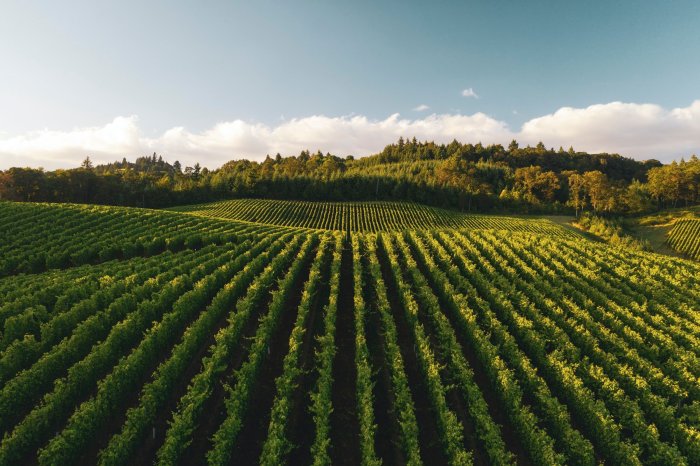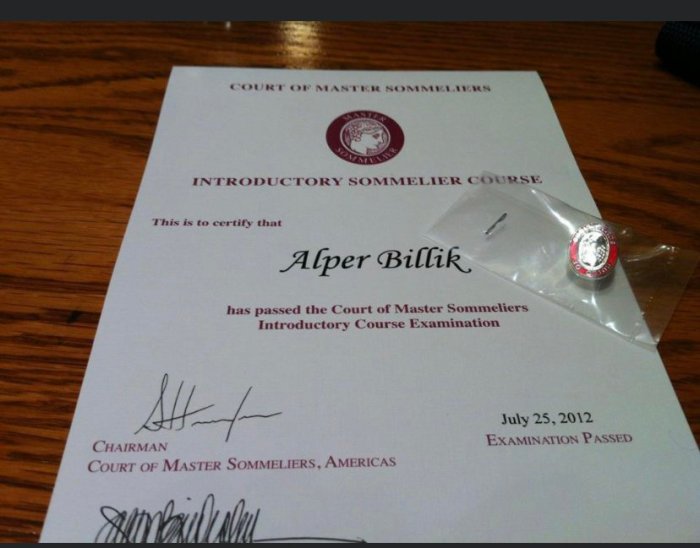As the Level 1 Sommelier Study Guide takes center stage, this opening passage beckons readers into a world crafted with expert knowledge, ensuring a reading experience that is both absorbing and distinctly original. Delve into the intricacies of wine, mastering the fundamentals and unlocking the secrets of this captivating beverage.
From the role and responsibilities of a sommelier to the intricacies of winemaking techniques, this guide provides a comprehensive overview of the subject. Prepare for the Level 1 Sommelier exam with confidence, gaining insights into wine regions, styles, and service.
Discover the art of wine pairing, explore the business aspects of the industry, and enhance your customer service skills. Embark on this educational journey and elevate your wine knowledge to new heights.
Sommelier Basics

Sommeliers play a vital role in the hospitality industry, providing expert guidance on wine selection and pairing. Level 1 sommeliers possess a fundamental understanding of wine and its service, and are responsible for recommending wines that complement dishes and enhance the dining experience.The
Court of Master Sommeliers (CMS) is the leading global organization for sommelier education and certification. Their certification program consists of four levels, with Level 1 being the entry point. To achieve Level 1 certification, candidates must pass a comprehensive exam covering wine knowledge, service skills, and tasting abilities.Becoming
a Level 1 sommelier offers numerous benefits, including:* Enhanced wine knowledge and expertise
- Improved wine service skills
- Increased confidence in wine recommendations
- Career advancement opportunities
- Recognition and credibility in the hospitality industry
Wine Knowledge

Wine, an alcoholic beverage produced from fermented grapes, is a captivating subject that unveils a world of flavors, aromas, and cultural significance. This section delves into the intricate realm of wine knowledge, exploring the major wine regions, styles, and techniques that shape this beloved beverage.
Major Wine Regions of the World
The world of wine is a vast tapestry of diverse regions, each boasting unique climatic conditions, soil types, and grape varieties. From the rolling hills of Tuscany to the sun-kissed slopes of California, each region imparts its own distinctive character upon its wines.
- Europe:Home to some of the world’s most renowned wine regions, Europe boasts a rich winemaking heritage spanning centuries. Regions like Bordeaux, Burgundy, and Tuscany are renowned for their iconic wines crafted from classic grape varieties.
- North America:California, Oregon, and Washington State have emerged as prominent wine-producing regions, showcasing the diversity of American terroir. From opulent Cabernet Sauvignons to crisp Chardonnays, these regions offer a wide range of styles.
- South America:Argentina, Chile, and Uruguay are gaining international acclaim for their exceptional wines. Malbec, Carmenere, and Tannat are among the signature varieties thriving in the diverse climates of these countries.
- Australia and New Zealand:The “New World” of wine, Australia and New Zealand are known for their innovative approaches and distinctive grape varieties. Shiraz, Sauvignon Blanc, and Pinot Noir are among the popular wines produced in these regions.
Wine Service

Wine service encompasses the crucial aspects of storing, handling, pairing, presenting, and serving wine to enhance the overall wine experience. Proper techniques ensure the preservation of wine’s integrity and elevate its enjoyment.
Wine Storage and Handling
Optimal wine storage conditions are essential for maintaining wine’s quality. Ideal storage involves:
- Temperature:Store wines at temperatures between 45-65°F (7-18°C), depending on the wine type.
- Humidity:Maintain humidity levels between 50-70% to prevent cork shrinkage and excessive evaporation.
- Darkness:Store wines in a dark environment to prevent light-induced degradation.
- Vibration:Avoid storing wines in areas with excessive vibrations, as it can disrupt sediment and affect wine quality.
- Proper Orientation:Store wines on their side to keep the cork moist and prevent oxidation.
Wine Pairing with Food
Wine pairing involves matching wines with dishes to complement and enhance both the wine and food experience. Principles of wine pairing include:
- Weight and Texture:Pair wines with dishes of similar weight and texture. Lighter wines complement lighter dishes, while fuller-bodied wines suit heavier dishes.
- Flavor Intensity:Match wines with dishes of similar flavor intensity. Delicate wines can be overwhelmed by bold flavors, while intense wines can overpower subtle dishes.
- Acidity and Sweetness:Balance the acidity and sweetness of wine with the acidity and sweetness of food. Acidic wines can cut through fatty dishes, while sweet wines complement desserts.
- Tannins and Fat:Tannins in red wines can enhance the perception of fat in food. Fatty dishes can soften the astringency of tannins.
- Personal Preference:Ultimately, the best wine pairings are those that suit personal tastes and preferences.
Wine Presentation and Service
The art of wine presentation and service enhances the overall dining experience. Key aspects include:
- Proper Stemware:Use appropriate stemware that complements the wine’s characteristics and allows for proper swirling and aeration.
- Temperature Service:Serve wines at their ideal serving temperature to showcase their optimal flavors and aromas.
- Decanting:Decant older red wines to separate sediment and enhance aeration.
- Wine Etiquette:Observe proper wine etiquette, such as holding the glass by the stem, pouring the correct amount, and avoiding excessive handling.
Business and Ethics: Level 1 Sommelier Study Guide

Sommeliers play a pivotal role in the wine industry, with responsibilities that extend beyond mere wine knowledge. They serve as ambassadors for the establishment they represent, ensuring the ethical and legal obligations of the business are upheld.
Mastering the intricacies of wine can be an enriching journey, especially with a Level 1 Sommelier Study Guide in hand. However, if you find yourself navigating the complexities of land contracts, remember that in a land contract the vendee typically assumes the risks and responsibilities of ownership.
As you delve back into the world of wine, let your Level 1 Sommelier Study Guide be your compass.
Legal and Ethical Responsibilities
Sommeliers must adhere to the legal requirements set forth by their jurisdiction, such as age restrictions for alcohol consumption and proper labeling of wines. They also have an ethical obligation to ensure that customers are not over-served and to provide a safe and enjoyable environment for all.
Customer Service and Communication Skills, Level 1 sommelier study guide
Exceptional customer service is paramount for sommeliers. They must possess excellent communication skills to effectively interact with customers, providing personalized recommendations and creating a memorable dining experience. Sommeliers should also be able to handle complaints professionally and resolve any issues promptly.
Business Aspects of the Wine Industry
Sommeliers should have a basic understanding of the business aspects of the wine industry, including wine production, distribution, and marketing. This knowledge enables them to make informed decisions when recommending wines and to stay abreast of industry trends.
Exam Preparation

Preparing for the Level 1 sommelier exam requires a comprehensive plan, including structured study, key concept summaries, and practice exercises.
A well-organized study plan ensures efficient time management and focused preparation. Allocate specific time slots for each topic, ensuring coverage of all exam domains. Utilize a variety of study methods, such as textbooks, online resources, and group discussions, to enhance understanding and retention.
Create a Comprehensive Study Plan
- Establish a realistic study schedule that accommodates your availability and learning pace.
- Break down the exam syllabus into smaller, manageable chunks.
- Prioritize topics based on their weightage and your level of familiarity.
- Allocate specific time slots for each topic, including breaks for revision and practice.
Create a Table Summarizing Key Concepts and Terminology
A summary table provides a quick reference for essential concepts and terminology. Organize the table into columns for topic, key term, and definition or explanation.
Design Practice Questions and Mock Exams
Practice questions and mock exams simulate the actual exam experience, helping you identify areas for improvement and build confidence. Design practice questions that cover a range of difficulty levels and topics.
FAQ Compilation
What are the benefits of becoming a Level 1 Sommelier?
Becoming a Level 1 Sommelier enhances your wine knowledge, improves your ability to pair wines with food, and demonstrates your commitment to the wine industry. It can open doors to career opportunities and enhance your personal enjoyment of wine.
How long does it take to prepare for the Level 1 Sommelier exam?
The time required to prepare for the Level 1 Sommelier exam varies depending on your prior knowledge and study habits. However, most candidates allocate several months to thorough preparation.
What is the pass rate for the Level 1 Sommelier exam?
The pass rate for the Level 1 Sommelier exam varies from year to year. Historically, it has been around 60-70%. However, the pass rate can fluctuate depending on the difficulty of the exam and the number of candidates taking it.